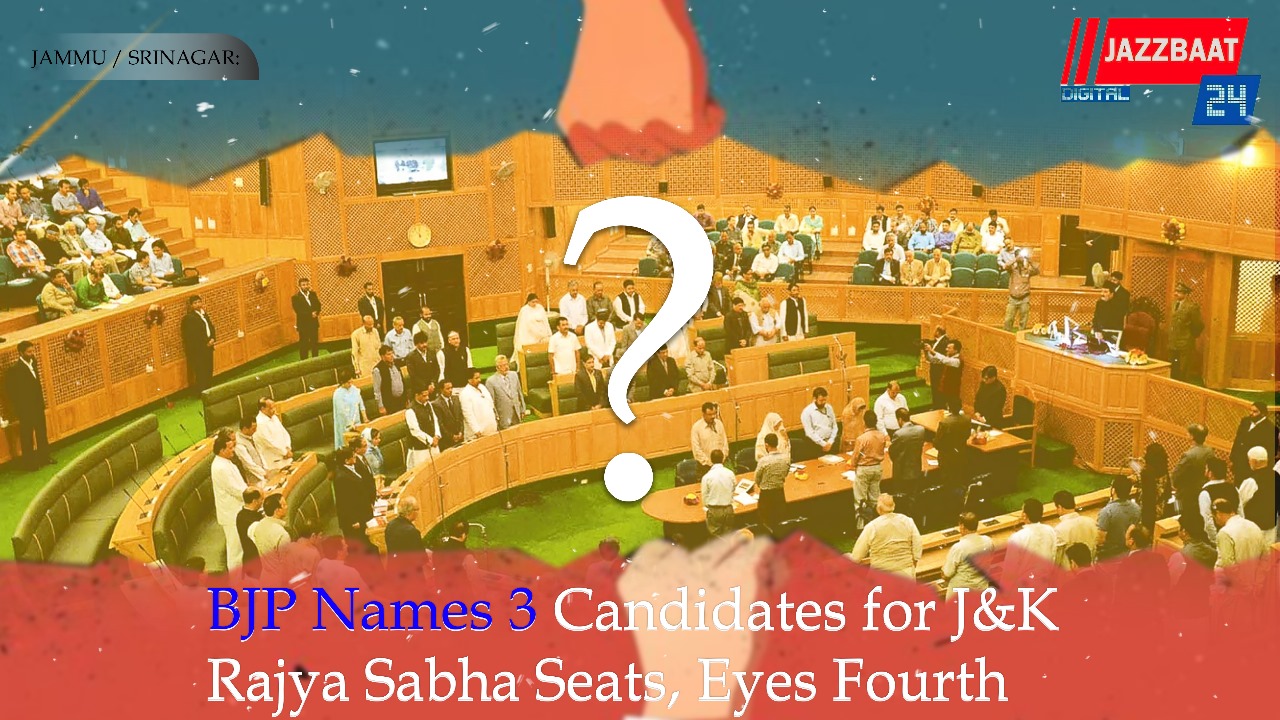JAMMU / SRINAGAR: The Bharatiya Janata Party (BJP) on Sunday announced its nominees for three of the four Rajya Sabha seats up for election in Jammu and Kashmir, signalling an assertive electoral strategy in the Union Territory. The party declared Sat Pal Sharma, Ghulam Mohammad Mir and Rakesh Mahajan as its official contenders for the October 24 polls.
Sat Pal Sharma, currently serving as the BJP’s J&K unit president, will contest from what the party describes as a “safe seat”, a seat where its assembly strength gives it a numerical advantage. The remaining two candidates, Mir and Mahajan are expected to vie for more contested seats.
The decision comes against the backdrop of a reshuffled political landscape. Since the reorganisation of Jammu and Kashmir into a Union Territory, this marks one of the more competitive Rajya Sabha elections in the region.
According to party sources, the BJP’s move to field candidates in multiple seats is intended to shape the electoral narrative and expand its reach. However, the National Conference-Congress alliance currently holds a stronger position in the J&K Assembly, with a combined strength of 53 MLAs compared to the BJP’s 28.
In two of the four vacant seats, the BJP has reportedly hinted at contesting both, setting up direct clashes with the NC-Congress bloc. For the other two seats, it appears the parties may contest one each, depending on backroom negotiations.
This election will fill the Rajya Sabha vacancies created in February 2021, when terms of four members expired - Mir Mohammad Fayaz, Nazir Ahmed Laway, Shamsher Singh, and Ghulam Nabi Azad.
Meanwhile, the National Conference has already announced three candidates for the upcoming polls and is reportedly in discussion with Congress about contesting or ceding the fourth seat.
The Election Commission has issued three separate notifications for the Rajya Sabha elections in J&K, covering the four seats. The voting and counting are scheduled for 24 October.
Observers suggest that the BJP’s willingness to contest multiple seats may compel cross-party outreach to smaller parties and independent MLAs whose support could tip the balance in closely fought contests. These dynamics, together with internal alliance strategies, will play a decisive role as the region heads toward the polls.
